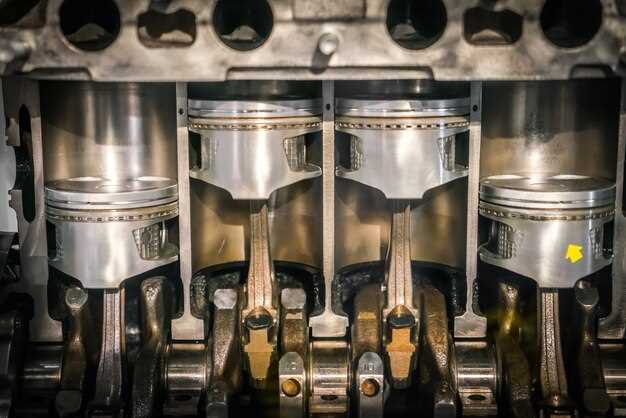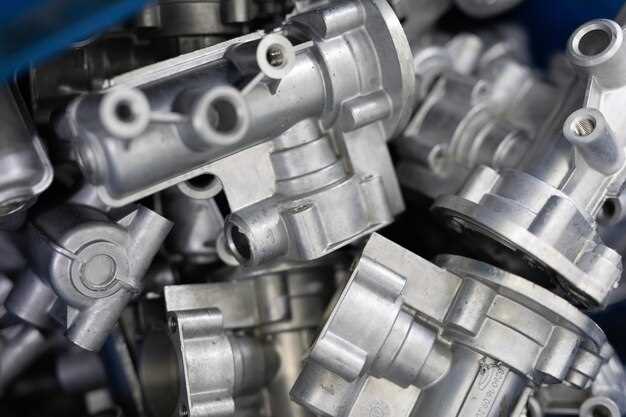The Best Wastegates and Blow-Off Valves for Turbo Cars


Turbocharged vehicles have gained immense popularity due to their ability to deliver high performance while maintaining fuel efficiency. However, enhancing the efficiency and safety of turbo systems requires more than just the turbocharger itself. This is where wastegates and blow-off valves come into play. These components are crucial for regulating boost pressure and ensuring optimal engine performance, making them essential upgrades for any serious enthusiast.
Wastegates control the flow of exhaust gases that spin the turbocharger, effectively managing the boost pressure produced. A well-chosen wastegate can prevent turbo lag and ensure that the engine operates within its ideal range. On the other hand, blow-off valves serve to release excess pressure in the intake system when the throttle is closed, preventing compressor surge and potential damage to the turbocharger. Together, these components not only protect the engine but also enhance the overall driving experience.
In this article, we will explore the best options available for wastegates and blow-off valves in the market today. We will provide a detailed analysis of performance, reliability, and features, helping you make an informed decision for your turbocharged vehicle. Whether you are a seasoned racer or a casual driver looking to enhance your ride, understanding these components will ensure you get the most out of your turbocharged engine.
How to Choose the Right Wastegate for Your Turbo Setup
Selecting the appropriate wastegate for your turbocharged engine is crucial for achieving optimal performance and boost control. Here are the key factors to consider when making your choice:
- Type of Wastegate:
- Internal Wastegate: Integrated within the turbocharger, simpler and typically less costly. Ideal for lower horsepower applications.
- External Wastegate: Mounted separately, offering better flow and control. Recommended for high-performance setups where precise boost management is essential.
- Size:
- Choose a wastegate that fits your turbo’s output. Generally, larger wastegates are necessary for higher horsepower to prevent overboosting.
- Consider both the valve size and the inlet/outlet diameter for optimal exhaust flow.
- spring Pressure:
- Select a spring that matches your desired boost level. This is the minimum boost the wastegate will allow before opening.
- Common spring pressures range from 7 psi to over 20 psi, depending on your setup.
- Quality and Brand Reputation:
- Invest in reputable brands known for reliability and performance, as quality can greatly affect engine efficiency.
- Reviews and recommendations from trusted sources can guide you in the right direction.
- Material and Build Quality:
- Look for wastegates made from high-temperature resistant materials to withstand the extreme conditions of turbocharged operation.
- Consider features like titanium or stainless steel construction for durability.
- Ease of Installation:
- Ensure that the wastegate design aligns with your engine’s configuration and available space.
- Some models come with comprehensive installation kits, simplifying the process.
By carefully evaluating these factors, you can choose the right wastegate that not only fits your turbo setup but also enhances performance and reliability.
Top Blow-Off Valves for Enhanced Turbo Response
In the world of turbocharged performance, the choice of blow-off valve (BOV) can significantly impact turbo response and overall driving experience. A well-chosen BOV releases the excess pressure built up during throttle closure, allowing for quicker turbo spooling and reducing lag. Here are some of the top contenders in the market:
| Blow-Off Valve | Type | Features | Compatibility |
|---|---|---|---|
| HKS SSQV4 | Diaphragm | Adjustable venting, lightweight design | Universal, popular among many tuners |
| Greddy Type S | Diaphragm | Dual-port versatility, robust construction | Ideal for various turbo setups |
| TurboXS R1 | Piston | Durable materials, quick response | Compatible with numerous models |
| AEM 30-0300 | Piston | Noise control, adjustable spring preload | Universal fitment |
| Vertex Racing V-Boost | Piston | Compact design, easy installation | Designed for performance enthusiasts |
Each of these blow-off valves offers unique features suited to different performance needs and vehicle types. When selecting a BOV, consider factors such as boost levels, vehicle model, and driving style to ensure optimal performance and enhanced turbo response.
Comparing Internal vs. External Wastegates: Which Is Better?
When optimizing performance for turbocharged cars, one critical decision involves selecting between internal and external wastegates. Each type has its pros and cons, which can significantly impact engine performance, turbo efficiency, and overall tuning.
Internal wastegates are integrated into the turbocharger’s housing, which simplifies installation and can save space within the engine bay. They are generally less expensive and easier to manage due to their compact form. However, internal wastegates can struggle with higher boost levels, leading to potential boost creep–meaning the boost pressure exceeds the desired levels as the wastegate fails to open adequately.
On the other hand, external wastegates are mounted separately from the turbocharger. This design allows for larger valves and more precise control over boost levels. External wastegates are often better at managing higher horsepower applications and reducing the risk of boost creep. They can provide improved exhaust flow, which can enhance turbo response and overall engine efficiency. However, external wastegates require more complex installation and can occupy more space, which might not be ideal for every setup.
Choosing between internal and external wastegates ultimately depends on application and goals. For those prioritizing simplicity and cost-effectiveness in lower power builds, internal wastegates are usually sufficient. Conversely, high-performance setups that demand precise boost control and reliability under extreme conditions will benefit from the capabilities of external wastegates. Evaluating your specific needs and constraints will help determine the best option for your turbocharged vehicle.
Installation Tips for Wastegates and Blow-Off Valves
Installing wastegates and blow-off valves in turbocharged cars is crucial for optimal performance and reliability. Here are essential tips to ensure a successful installation.
1. Choose the Right Location: Select a location for the wastegate and blow-off valve that minimizes boost leaks and allows for efficient airflow. Ideally, the wastegate should be positioned close to the turbine housing, while the blow-off valve should be placed in the intake piping before the throttle body.
2. Ensure Proper Alignment: When installing the wastegate and blow-off valve, ensure that they are aligned correctly with the exhaust and intake paths. Misalignment can lead to poor performance and potential damage. Use proper flanges and gaskets to create a secure seal.
3. Use Quality Hardware: Always use high-quality bolts, nuts, and fittings. Cheaper alternatives may corrode or fail, potentially leading to undesirable leaks or blow-off valve failure.
4. Vacuum Source for Blow-Off Valve: Ensure that the blow-off valve is connected to a reliable vacuum source. This will help the valve to open and close at the correct boost levels, preventing compressor surge and maintaining turbo efficiency.
5. Tune the Spring Pressure: Adjust the spring pressure in the wastegate according to the desired boost levels. A stiffer spring will increase boost pressure, while a softer spring will allow for lower boost. Proper tuning is vital for achieving the desired performance.
6. Consider Boost Controller: If using an electronic boost controller, ensure it is compatible with the installed components. This will allow for more precise control over boost levels and improve overall responsiveness.
7. Test for Leaks: After installation, conduct a thorough boost leak test. Pressurize the intake system and check all connections, including gaskets and welds, to ensure that there are no air leaks that could impact performance.
8. Monitor Performance: After installation, monitor the performance under various driving conditions. Pay attention to boost levels and any unusual sounds which may indicate installation issues or component failure.
Following these tips will help ensure that your wastegate and blow-off valve are installed correctly, enhancing your turbocharged car’s performance and longevity.
Common Issues with Wastegates and How to Troubleshoot Them

Wastegates are critical components in turbocharged engines, responsible for regulating turbocharger speed and preventing overboost. However, they can experience various issues that affect performance. Understanding these common problems and their solutions can help maintain optimal engine performance.
One frequent issue is a stuck wastegate. This can occur due to carbon buildup or mechanical failure. Symptoms include overboosting or underboosting. To troubleshoot, inspect the wastegate actuator for proper movement. You may need to clean or replace it if it is jammed. A vacuum test can also determine if the actuator functions correctly.
Another problem is a leaking wastegate. Leaks can lead to inconsistent boost levels, causing poor engine performance. To identify leaks, use a boost leak test by pressurizing the intake system and listening for hissing sounds. Inspect the wastegate for cracks or signs of wear. If a leak is found, resealing or replacing the wastegate may be necessary.
Incorrect boost control is also common. This can result from a faulty boost control solenoid or incorrect tuning. Check the solenoid for any signs of malfunction, such as electrical issues or physical damage. Re-calibrating or reprogramming the engine management system may also be required to ensure proper boost levels are achieved.
Inconsistent boost levels can also stem from improper wastegate spring pressure. This often occurs when altering boost levels for performance tuning. To address this, verify the spring specifications and ensure they match the desired application. Replacing the spring with one that fits your boost requirements can alleviate the issue.
Lastly, another common problem is the presence of excessive noise from the wastegate. This may be due to mechanical failure or improper installation. Inspect all mounting points and hardware for tightness and integrity. If the noise persists, the wastegate may need to be replaced or serviced to eliminate any malfunctioning components.
Regular inspection and maintenance of the wastegate can help prevent these issues, ensuring reliable performance in turbocharged applications. Proper attention will keep the system functioning efficiently and prolong the lifespan of your turbo setup.
Performance Benefits: Understanding Boost Control with Wastegates
Wastegates are crucial components in turbocharged systems, responsible for managing turbocharger boost pressure. Proper boost control is essential for optimizing performance, efficiency, and engine longevity. By regulating the flow of exhaust gases to the turbine, wastegates help maintain the desired boost level, preventing overspeed conditions that could lead to engine damage.
There are two primary types of wastegates: internal and external. Internal wastegates are integrated into the turbo housing, while external wastegates are mounted separately. The choice between them can affect responsiveness and tuning flexibility, with external wastegates typically offering better boost control at high performance levels due to their larger size and enhanced heat dissipation capabilities.
One of the principal performance benefits of using a wastegate is the prevention of turbo lag. By allowing excess exhaust gases to bypass the turbine, wastegates enable the turbo to spool more consistently, resulting in quicker throttle response and smoother power delivery. Additionally, wastegates contribute to higher peak power output by ensuring that the turbo operates within its efficient range, maximizing airflow without risking surge or stalling.
Another important aspect of boost control provided by wastegates is the enhancement of engine safety. An uncontrolled boost can lead to pre-ignition or knock, which can severely damage the engine. By accurately managing boost levels, wastegates help maintain an ideal air-fuel ratio and ignition timing, thereby promoting optimal combustion and ensuring engine durability.
In high-performance applications, adjustable wastegates can further fine-tune boost levels based on specific driving conditions or modifications to the vehicle. This adaptability allows for a tailored performance experience, whether for daily driving, track days, or competitive racing. Consequently, understanding the role of wastegates in boost control is vital for anyone looking to enhance the performance of their turbocharged vehicle.
